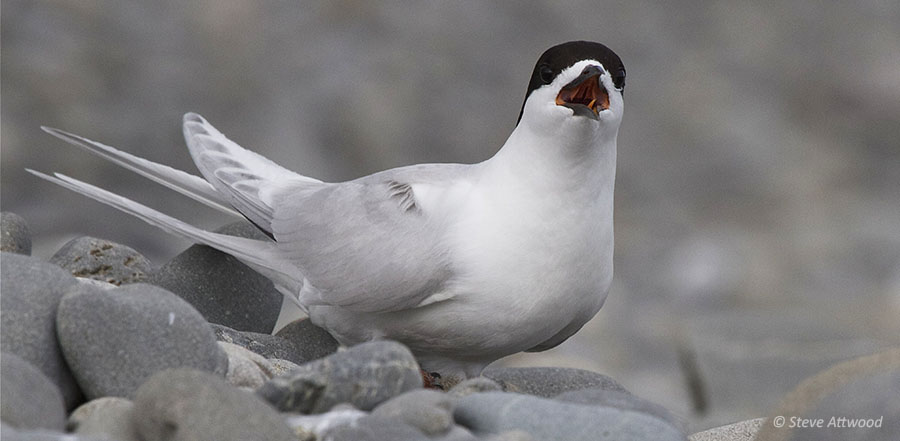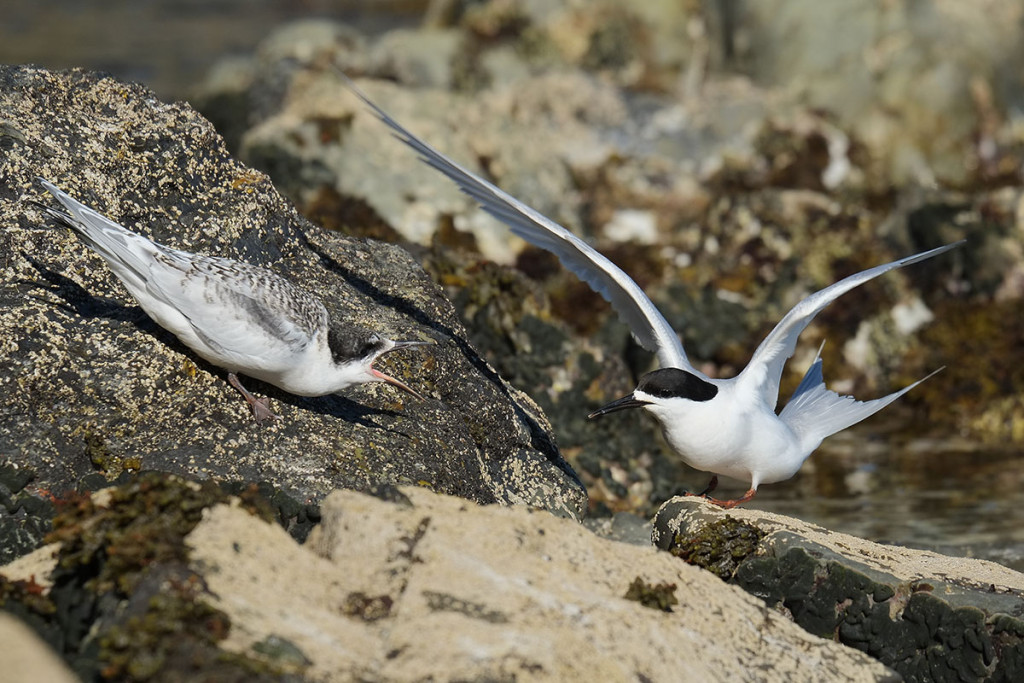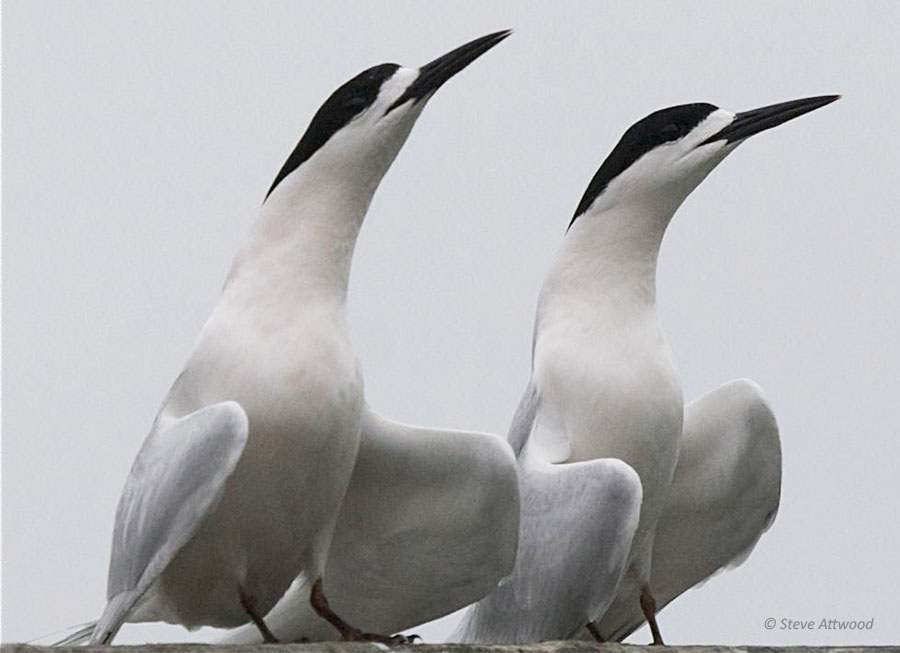White fronted tern | tara
Status: Declining

The white-fronted tern | tara is occasionally seen foraging up Canterbury rivers. It is more commonly seen around the coastline and coastal estuaries throughout New Zealand, nesting in large dense colonies on shingle river beds, sand dunes, stacks and cliffs (distribution map).
Description
The white-fronted tern (Sterna striata) tara ((Māori), the most common tern in New Zealand including outlying islands, measures 42cm and weighs 160gm, which is about 50% larger than the endemic black-fronted tern. Some birds, mostly immature, winter along the east coast of Australia.
Pale grey above and white below, with a long white forked-tail, a black cap separated from the long pointed black bill by a white band, and a narrow dark band on the outer edge of the first primary. Breeding adults have a black cap that extends from the white frontal strip down to the back of neck; non-breeding adults have a reduced cap leaving the forehead white. The bill is dark brown-black and legs are dark red-brown/black.

More information
- NZ Birds online (includes photos, sounds)
- Birdlife International (includes Google distribution map)
- NZ Birds
Conservation efforts

